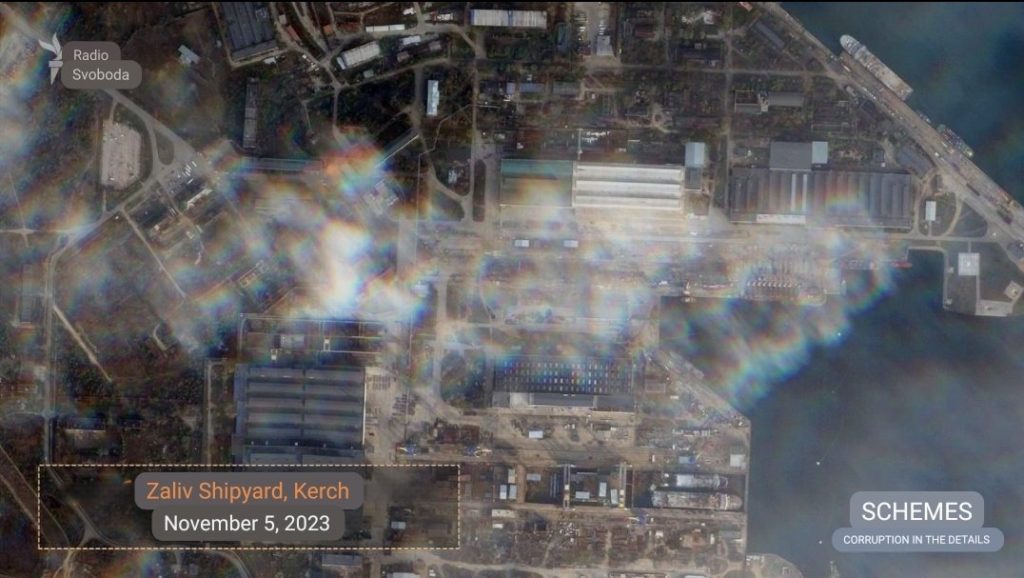The images from Planet Labs were obtained by the editorial team of Radio Free Europe/Radio Liberty’s ‘Schemes’ project. In the photos, the damage inflicted by the Ukrainian airstrike on the shipyard in occupied Kerch is evident, as well as the Russian military vessel Askold, capable of carrying Kalibr missiles.
“I think this ship was already docked at the pier and was being repaired because it was supposed to be launched in December. It is still afloat, but the upper part of the vessel is visibly damaged,” captain first rank of the Ukrainian naval reserve Andriy Ryzhenko said in a comment to ‘Schemes’ after analyzing the satellite image.
According to Ryzhenko, the neutralization of the Askold is of great importance for Ukraine’s security.

On 4 November, Ukraine launched a series of strikes on a shipyard in occupied Crimea’s Kerch, reportedly with French SCALP missiles.
According to the Stratcom of Ukraine’s Army, successful strikes were carried out on a shipyard in Kerch, a city in immediate proximity to the Crimea bridge connecting the occupied peninsula to mainland Russia.
The Stratcom said that the strikes were aimed at the maritime and port infrastructure of the Zaliv shipyard.
Russia’s Ministry of Defense confirmed the strike on this shipyard, claiming that 13 of 15 cruise missiles were shot down, and stated that one cruise missile damaged a ship that was docked there.
The Askold is a small missile ship of the Russian Navy. It was commissioned in 2021. The Askold has a displacement of about 870 tons, a length of 67 meters, and a top speed estimated at 30 knots. The ship’s armament includes an artillery mount, air defense systems, eight Kalibr anti-ship missile launchers, and its own Pantsir air defense system. It has a crew of around 39 sailors.

On 4 November, explosions were reported not only in Kerch; a smoke screen was also observed in Sevastopol Bay.
Read more:
- Ukraine hit modern Russian missile ship in occupied Crimea
- Explosions rock occupied Crimea, Sevastopol bay shrouded in smoke
- Ukrainian forces destroy state-of-the-art Russian weapon dubbed ‘impenetrable drone dome’







